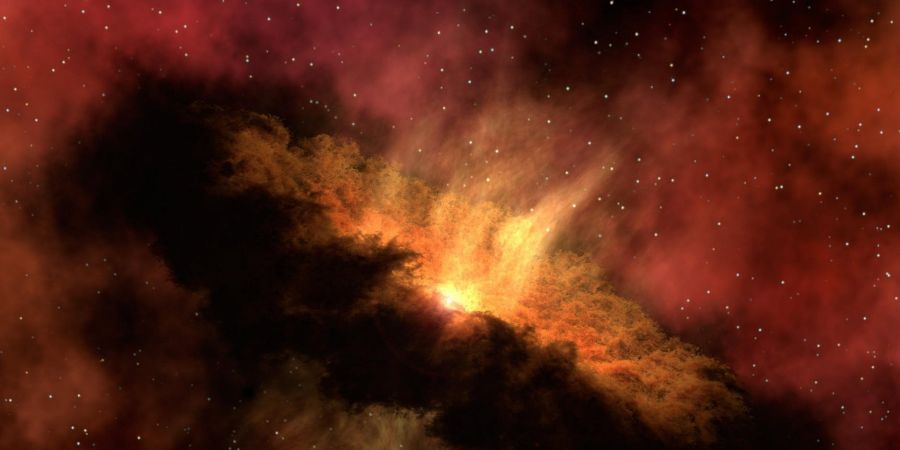

NEARLY FOURTEEN BILLION YEARS AGO, the universe exploded out of virtually nothing. The first scientist to propose this astonishing theory, now known as the Big Bang, was George Lemaître (1894-1966). His idea was supported by the work of Edwin Hubble (1889-1953), which showed that the universe is expanding. If this is so, the entire cosmos must have originated from a single point of explosion. But what was that single point? Scientists call it a "singularity". - a tiny, infinitely dense dot that once contained all the matter of the universe. Such a thing is impossible to imagine, and even astronomers do not really understand it. Yet within a f minutes of the Big Bang, the single point would have b converted into an immense, expanding cloud of Over millions of years this became the galaxies, stars, and planets of the universe
RED SHIFT
The light from some stars looks redder than it should. This is due to the Doppler Effect, and shows that these stars are moving away from us. Distant galaxies also look redder but because the whole of space is expanding their lightwaves are stretched when they reach us. This is called red shift.
CHAIN OF EVENTS Scientists believe that the universe
was created in an explosive event called the Big Bang. At the instant of creation, matter was concentrated in an infinitely small, dense dot called a singularity. This then began to expand and cool, allowing the conversion of energy into particles. After thousands of years, these particles joined to make atoms of hydrogen and helium that would eventually
form galaxies and stars.
DOPPLER EFFECT Christian Doppler (1803-53) showed that sound waves are compressed if the source is moving towards your car, and stretched if it is moving away. This alters the pitch of the sound you hear. The same principle applies to light waves arriving from distant stars.
The sound waves of an ambulance Siren are compressed as it comes pearec reducing their wavelength and raising their pitch
If a star is moving away, its light waves are stretched out and shift towards the red end of the spectrum.
.
As the ambulance
moves away, the siren's sound waves stretch, increasing their wavelength and lowering their pitch.
Wavelength and colour unchanged waves, light bluer
If a star is staying in the
same position relative to Earth, then the wavelengths of light emitted remain
unchanged.
If a star is moving towards the Earth, light waves are compressed and shift to the blue end of the spectrum.


